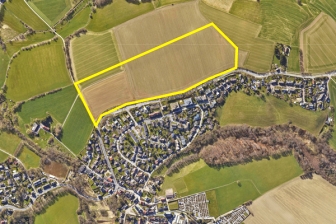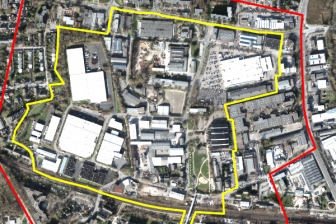Bergische Kooperation (DE)
The Synthetic Site Folder and Site Brief are available for free.
Please register and login to access the Complete Site Folder.
- Synthetic site folder DE | EN
- Site Brief EN
- Site on Google Maps
- Back to map
Data
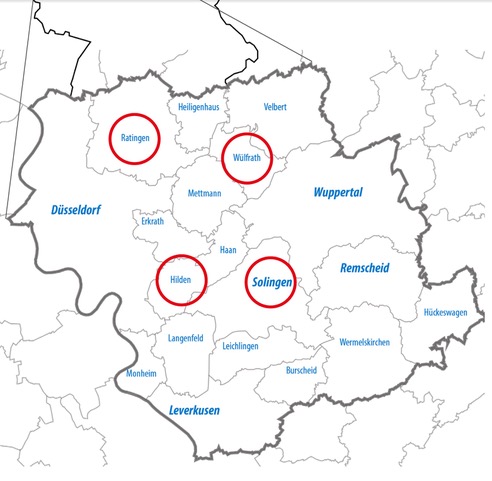
Project scale XL/L/S - territory / urban + architecture / architecture + context
Location Hilden, Ratingen, Solingen and Wülfrath-Düssel
Population Hilden 58,000 inhab.; Ratingen 92,300 inhab.; Solingen 159,000 inhab.; Wülfrath-Düssel 21,200 inhab.
Strategic site 16.7 ha; 91.9 ha; 20.7 ha; 48.42 ha
Project site 2.8 ha; 43 h; 42.5 ha; 12 ha
Site proposed by Bergische Struktur- und Wirtschaftsförderungsgesellschaft mbH
Actors involved Hilden, Ratingen, Solingen and Wülfrath, Bergische Struktur- und Wirtschaftsförderungsgesellschaft mbH
Owner of the site Public and private owners
Commission after competition Urban layout plan
Team representative Architect - urbanist - landscaper
More Information
How can the site contribute to a productive city?
The cooperation space “between Rhein and Wupper“ wants to initiate regional and local urban quarter developments on basis of a common future concept of the project “Future Quarters between Rhein und Wupper”, that include the possibilities and challenges of the technological and social changes in a constructive way. Within this framework, four cities from this cooperation space – Hilden, Ratingen, Solingen and Wülfrath – pose a common question for the Europan 15 session. Objective and task are to design specific spatial strategies and images and, additionally, create an international momentum for the development of urban quarters in the region.
City strategy
The four sites differ in position, size and basic conditions: from the large city Solingen to the small district Düssel in the city of Wülfrath, from the transformation of a former industrial area to a new development on a green field.
All sites are located at existing or soon to be build public transport stops that should connect different scales in the region. The common objective should be answered on a strategical level for all four sites not only to gain specific solutions for the specific sites but also to generate common qualities and actions for the whole cooperation space.
Site definition
1. Hilden:
With respect to the city plan of the “Gründerzeit”, a building concept for the area between city centre and train station should be developed that combines new forms of living with commercial and freelance uses side by side.
2. Ratingen:
The city wants to initiate an extensive restructuring process with a potential new suburban train station. The given site should act as an integrational element for the train stop and a future link between the western city and the city centre. It should also act as a prototype for the cooperation and coexistence of working and living. The task is not about demolition and rebuilding but about creating a process of change in the neighbourhood. New interdependences and requirements between working and living, open spaces and mobility should be researched through this transformation.
3. Solingen-Wald:
There are several scenarios for the subsequent use of the former industrial area although the adjacent building with housing should be taken into account. The city envisions an urban quarter of living and working with a mixture of innovative undisturbing commercial uses, housing for the young and the elderly, services and other complementary uses as well as attractive open spaces with playgrounds for the kids and high quality places to stay. They expect an urban quarter with high quality urban design and architecture. The topics of “ecological resources”, “new mobility” and “equity” are also main topics of the sustainability strategy of the city. The site should become a showcase for sustainable city development in Solingen and the region.
4. Wülfrath-Düssel:
A new district should be developed that preserves the uniqueness and specific quality of the place. Given that, it is necessary to take the housing areas which serve the larger cities into account but to preserve the grown qualities of social structures and building culture and develop them. Düssel should become a lively place at which living, working and leisure can coexist. A certain challenge is to connect and interweave the new settlement area with the existing and partly historical structures of the district.
How is production inserted in the urban diversity programme?
The whole region is well known for its industrial heritage (metal, cutlery, tools, textiles, machines, automotive and chemical industry). In the present economic situation, a thematic change to digitalization and artificial intelligence is envisioned. The present economy is formed mainly by small and medium sized businesses with a high amount of manufacturing industries. The services sector is increasing in the last decade.
All four sites have specific challenges. The city of Hilden successfully transformed their economy from textile and metal industry to a services and trade town. The city of Ratingen is located very close All sites will get a new train stop in the next years. Therefor they have the chance to combine housing, working, digital production and leisure qualities with excellent traffic connections. The goal should be to create neighbourhoods or settlements that bear a lively mixture even during daytime.
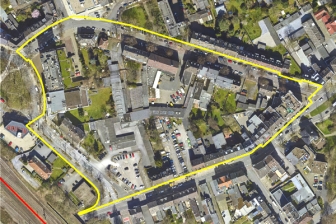 Hilden
Hilden
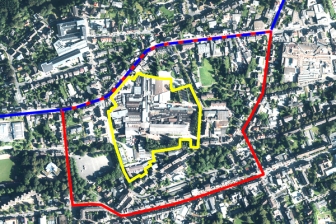 Solingen
Solingen
Questions on the site
Is it possible to deviate from the scale on the second poster?
Please don't. We did set the scale to keep the projects comparable. Thank you.
This site is connected to the following theme
IMPLANTING IMPLANTING Productive milieus
Productive milieus
The challenge for cities to be both productive and sustainable is to interlink resources, mobilities and conditions of fairness. There are two aspects to implanting new dynamics or reactivating resources such as urban farming and educational, research or creative forces: productive milieus and productive uses.
This is the level where a natural, cultural, social or economic environment is implanted or revitalised symbiotically, by contrast with the architecture of objects or the urbanism of technocracy. So what is needed is to activate human and nonhuman resources and an ecosystem of partners, while at the same time paying attention to integrative values between nature and culture.
Questions on the site
You have to be connected –and therefore registered– to be able to ask a question.
Fr. 16 May 2025
Deadline for submitting questions
Fr. 30 May 2025
Deadline for answers
Before submitting a question, make sure it does not already appear in the FAQ.
Please ask questions on sites in the Sites section.
Please ask questions on rules in the Rules section.
If your question does not receive any answer in 10 days, check the FAQ to make sure the answer does not appear under another label or email the secretariat concerned by the question (national secretariat for the sites, European secretariat for the rules).
